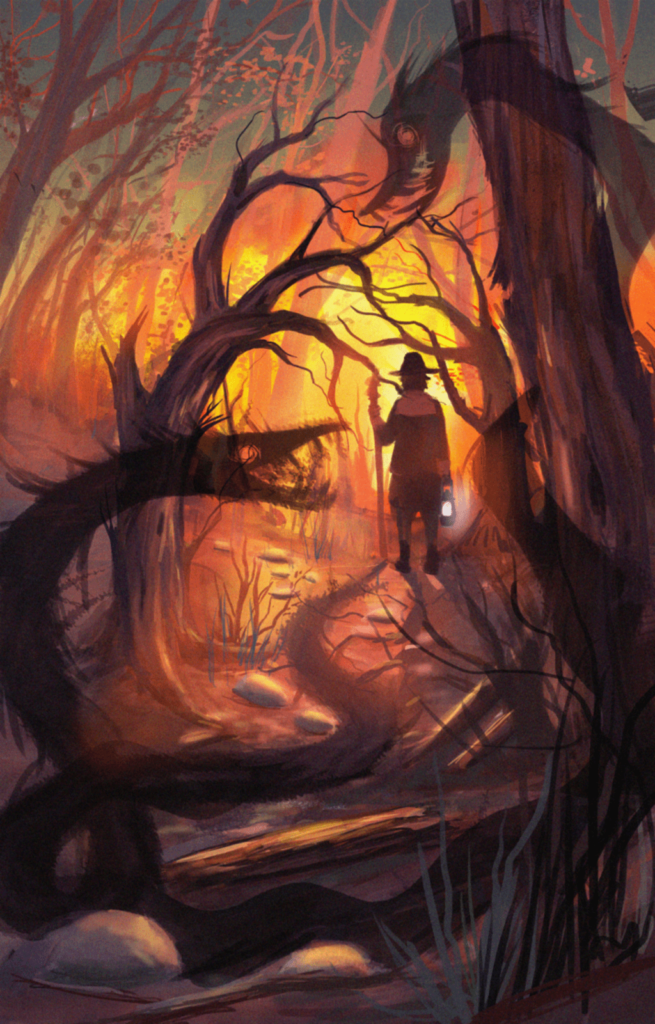
Tuesday
Yesterday I began my Lifelong Learning class on “the Supernatural Gothic in American Fiction.” Although gothic novels are sometimes downplayed as genre fiction, some of America’s masterworks have gothic elements, including stories by Poe and Hawthorne, Moby Dick, Turn of the Screw, and Beloved, not to mention Southern Gothic literature. (While authors like William Faulkner, Flannery O’Connor, Eudora Welty, and James Dickey don’t truck with the supernatural, their fiction nevertheless has a serious creep factor.)
In my view, authors turned to the gothic to counter American exceptionalism, which gave us a one-dimensional picture of ourselves. This exceptionalism, in turn, can be tracked back to two historical movements, the Puritanism of the Mayflower pilgrims and the Enlightenment principles of the founders. While the founders were often deists rather than Puritans, their vision of an Enlightenment republic overlapped to a degree with John Winthrop’s dream of “a city upon a hill.” Both saw America destined for great things.
I discussed how Poe and Hawthorne push back against American arrogance, Poe against the Enlightenment, Hawthorne against Puritanism. Although Poe celebrates reason (Dupin’s “ratiocination”) in his detective stories, he is just as likely to see reason going haywire. In both “The Tell-Tale Heart” and “The Black Cat,” the insane narrators go out of their way to argue they are rational. Here’s the “Tell-Tale” narrator:
True! –nervous –very, very dreadfully nervous I had been and am; but why will you say that I am mad? The disease had sharpened my senses –not destroyed –not dulled them. Above all was the sense of hearing acute. I heard all things in the heaven and in the earth. I heard many things in hell. How, then, am I mad? Hearken! and observe how healthily –how calmly I can tell you the whole story.
Hawthorne similarly shows how an purity obsession turns into its opposite. Venturing into the forest of the human soul, Young Goodman Brown “discovers” that humans are irredeemably corrupt:
On the Sabbath-day, when the congregation were singing a holy psalm, he could not listen, because an anthem of sin rushed loudly upon his ear, and drowned all the blessed strain. When the minister spoke from the pulpit, with power and fervid eloquence, and with his hand on the open Bible, of the sacred truths of our religion, and of saint-like lives and triumphant deaths, and of future bliss or misery unutterable, then did Goodman Brown turn pale, dreading lest the roof should thunder down upon the gray blasphemer and his hearers. Often, awaking suddenly at midnight, he shrank from the bosom of Faith, and at morning or eventide, when the family knelt down at prayer, he scowled, and muttered to himself, and gazed sternly at his wife, and turned away.
In the class I introduced Freud’s notion of the uncanny, which involves refusing to face up to dimensions of ourselves that we find abhorrent. By pushing them under, we render them toxic, and they return to us in dreams or psychosis (the “return of the repressed”). The Enlightenment couldn’t acknowledge the degree to which human beings are susceptible to madness and unreason, but Poe wasn’t afraid to go there.
Similarly, the Puritans had such a stake in purity that they became obsessed with its opposite. Hawthorne’s Brown goes overboard in his revulsion at human fallibility (especially his wife’s), while Hawthorne’s scientist in “The Birthmark” inadvertently kills his own beautiful wife by surgically removing her one physical flaw. In Scarlet Letter, Pearl throws a fit when her mother tries to cast off the emblem that defines her.
When one of the students asked about Poe’s and Hawthorne’s intentions, I said that authors are, above all, committed to truth. I described authors as our shamans, channeling a sense of who we are and providing that assessment to us through stories. Since gothic fiction explores what we repress, authors find it particularly fruitful.
Whenever America resorts to chest-thumping boosterism, gothic literature responds with haunted houses that function as metaphors for the self. We are not as healthy and self-confident as we tell ourselves.
In next week’s class, I will be looking America’s obsession with innocence, as celebrated by L. Frank Baum in Wizard of Oz and seriously questioned by James in Turn of the Screw. To be continued.

